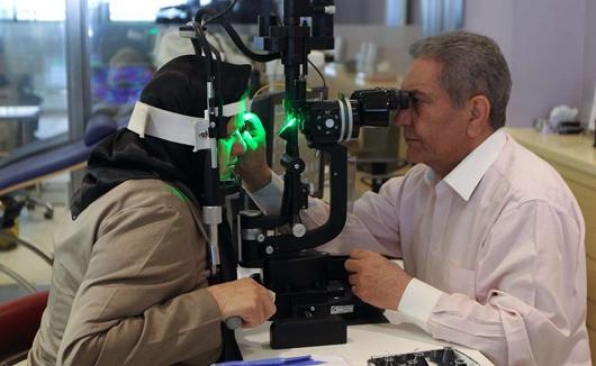 Zistboom:�Iran is a peaceful country that is successfully attracting regional medical tourists away from rivals with political and civil strife.
Zistboom:�Iran is a peaceful country that is successfully attracting regional medical tourists away from rivals with political and civil strife.This is probably the clearest example of how politics and the global media both affect where medical tourists go for treatment.
Thanks to its geographical position, the conditions in neighboring countries, reasonable prices and advanced medical facilities, Iran is becoming a destination for Muslim and regional medical tourists, imtj.com reported.
An increasing number of hospitals in Iranian cities offer medical and healthcare services for foreign medical tourists. Iran offers very advanced healthcare.
Geographical closeness and cultural and religious similarities have turned Iran into one of the favorite destinations for the Muslim world, as well as other denominations from nearby countries.
Iran has a highly educated workforce and is a local leader in scientific and health development. It is one of the top five countries in biotech and nine out of 15 high usage biotech molecules are produced in Iran.
There are two strands to the demand, medical tourism and health/wellness tourism. The existence of mineral springs in many parts of the country targets the latter market. Other markets include fertility treatment, stem cell treatment, dialysis, heart surgery, cosmetic surgery, and eye surgery.
Latest figures suggest that 30,000 medical tourists enter Iran annually; plus 200,000 health, wellness and spa tourists.It has a Health Tourism Committee that has produced rules and regulations for tourist healthcare service centers so that hospitals and clinics that want to offer health tourism services to foreign citizens need to acquire licenses from both the Ministry of Health and the Iranian Tourism Organization.
The committee also offers health service training to employees of tourism agencies and encourages hospitals to open international patients� wards. Iranian hospitals that hold a medical tourism license from the Ministry of Health arrange airport transfers as well as accommodation. In addition, a nurse can be assigned to each patient.
The key target market is the Persian Gulf region, taking people who used to go to Europe or troubled local rivals such as Jordan. An increasing number of patients come from Azerbaijan, Turkey, Iraq, Pakistan and even India.
Some are attracted by the low prices, some for specialist care and many come simply because they feel more culturally comfortable in Iran than in Europe or Asia.
Iran offers services in ophthalmology, cardiology, kidney transplants, dentistry, urology and general surgery.
Based on studies conducted by Iran�s Cultural Heritage, Handicrafts and Tourism Organization (ICHHTO), Iraq, Afghanistan, Persian Gulf states, Central Asian nations and Iranians residing abroad are the main targets.
ICHHTO provides travel agencies active in health tourism with special facilities such as a pavilion for them in overseas fairs. It has also specified certain provinces for health tourism with the cooperation of the Ministry of Health:
� Tehran province for treating tuberculosis and lung disorders
� Khorasan Razavi for ophthalmology, skin care, heart surgery and orthopedics
� Fars for liver, kidney and marrow transplants
� Yazd for treating infertility
� Qom for its sun and desert potentials
� Hamedan, Ilam and Zanjan as centers of herbal medicine.
What began as a development to stop Iranians from traveling abroad to get medical treatment has turned into success in attracting health and medical tourists.
Iran is quietly taking business from established competitors and ignoring the global media frenzy that surrounds it.
By Zistboom
The Iran Project is not responsible for the content of quoted articles.











